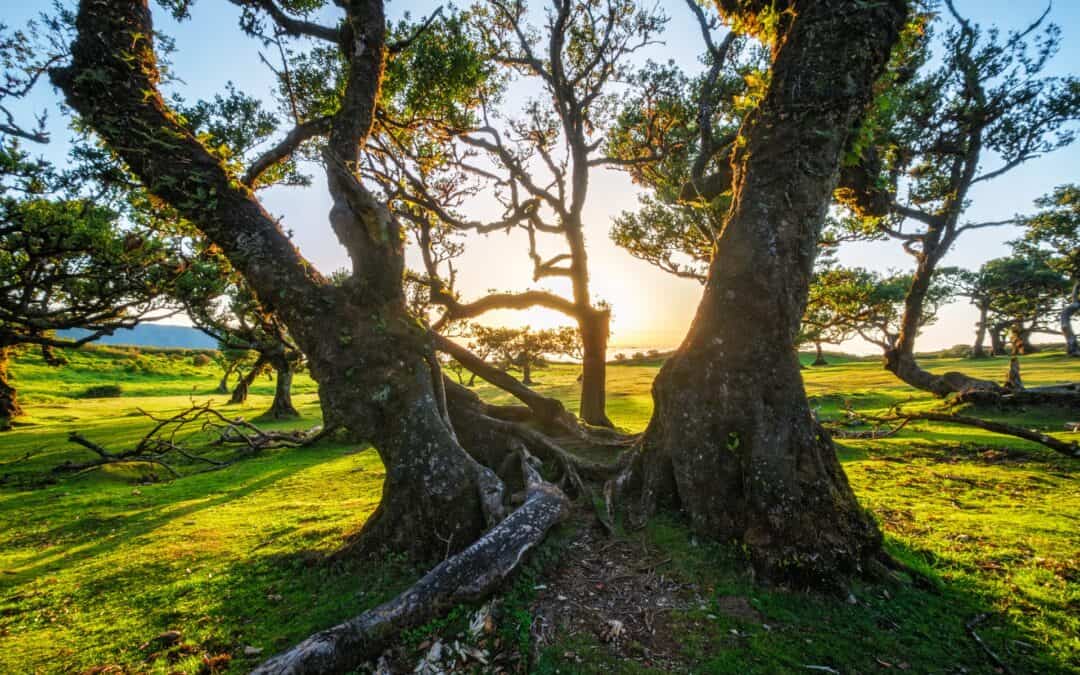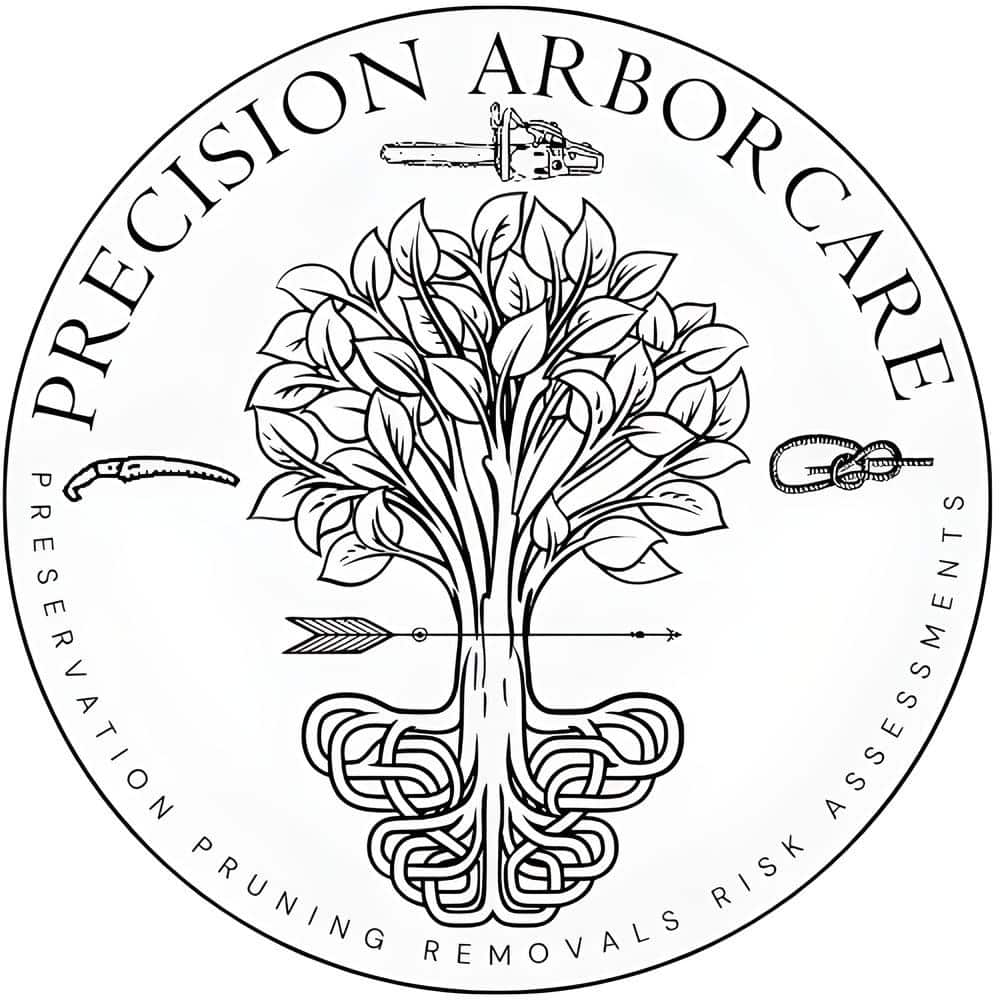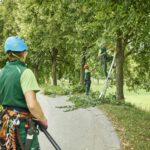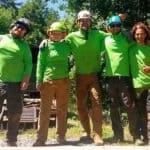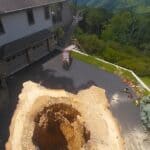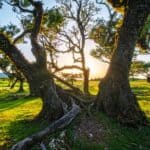Trees add beauty, shade, and value to a property, but they can also pose risks if they’re unhealthy or unstable. Knowing how to identify hazardous trees can prevent accidents, save money, and ensure the safety of everyone around. Arborists often emphasize that tree hazards aren’t always obvious. Homeowners may overlook potential issues that could turn a seemingly healthy tree into a liability.
Learning to recognize hazardous trees involves understanding the signs of decline, structural defects, and external damage. With proper observation, hazardous trees can be identified before they become a danger.
- Dead branches or limbs hanging from the tree
- Cracks or splits in the trunk or branches
- Leaning trees or trees with exposed roots
Identifying Hazardous Trees Early
An experienced arborist once evaluated a large oak tree that had been standing in a homeowner’s yard for over 50 years. Though the tree appeared healthy at first glance, further inspection revealed deep cracks in the trunk and significant root damage. This tree posed a serious risk, and immediate action was necessary to avoid a dangerous situation.
Many hazardous trees can look perfectly fine from a distance. Yet, issues like disease, pests, or environmental factors may be hiding underneath the surface. Identifying hazardous trees early allows property owners to prevent accidents.
- Trees that lean to one side suddenly
- Mushrooms or fungi growing at the base of the tree
- Trees with large cavities or missing bark
Signs of Tree Health Decline
When a tree’s health begins to decline, there are often subtle signs that can help identify potential hazards. Trees, much like people, show symptoms of distress long before they reach the point of collapse. Arborists are trained to spot these early warning signs, but homeowners can also keep an eye out for key indicators of decline.
Tree decline can often be slow and progressive, giving plenty of time to take action. Ignoring early signs can turn a simple fix into a costly or dangerous situation.
- Yellowing leaves out of season
- Bare branches during growing season
- Unusual insect activity on or near the tree
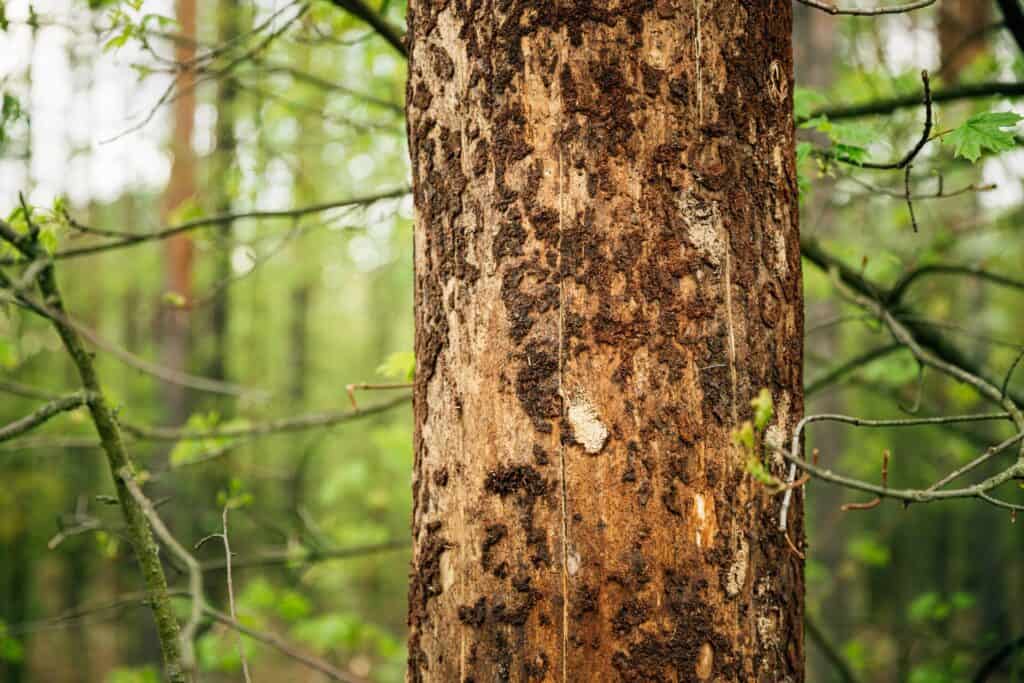
Common Structural Defects in Trees
Structural defects are one of the biggest contributors to hazardous trees. A tree may have multiple trunks, deep cracks, or poor branch structure, all of which increase the risk of breakage. These defects are particularly dangerous because they can cause parts of the tree to fall unexpectedly.
Arborists will often point out that defects like co-dominant stems or weak branch unions are common, especially in older trees or fast-growing species. Structural issues need to be addressed to prevent branches or even the entire tree from falling.
- Multiple trunks growing from the same point
- Branches that grow closely together, forming a “V” shape
- Large cracks or seams along the trunk
How to Inspect Trees for Damage
Inspecting a tree for damage involves a close look at its trunk, branches, and roots. While the average person might focus only on the leaves or the overall shape of the tree, an arborist digs deeper, looking for cracks, hollows, and even subtle signs of pest damage. This process ensures that any hidden issues are uncovered before they become larger problems.
Many hazards are visible once you know what to look for. A simple inspection can be the difference between safety and a costly accident.
- Look for sawdust or wood shavings near the base (signs of pests)
- Check for hollow sounds when tapping the trunk
- Examine the ground around the roots for signs of uplift
Why Tree Location Matters for Safety
The placement of a tree can greatly impact its potential hazard level. A tree that’s leaning over a house, power line, or driveway poses a much higher risk than one in an open field. An arborist will always take the tree’s location into account when assessing hazards.
Trees near sidewalks, roads, or structures may require more frequent inspections. A tree’s location often determines how much damage it could cause if it were to fail.
- Trees near homes, power lines, or busy roads
- Roots growing into foundations or sidewalks
- Trees that block sightlines on streets or driveways
Tree Species and Hazard Potential
Different tree species have varying levels of hazard potential. Some trees are more prone to breakage or disease, while others have stronger wood and are more resilient. Arborists have a deep understanding of tree species and their potential risks, which helps them assess which trees might be more hazardous in certain conditions.
Understanding the nature of the tree can provide valuable insight into whether it’s more likely to become a hazard. For example, softwood trees like willows are more likely to break in storms compared to hardwoods like oaks.
- Softwood trees are more prone to breakage
- Certain species are more susceptible to diseases like Dutch elm
- Fast-growing trees often have weaker structures
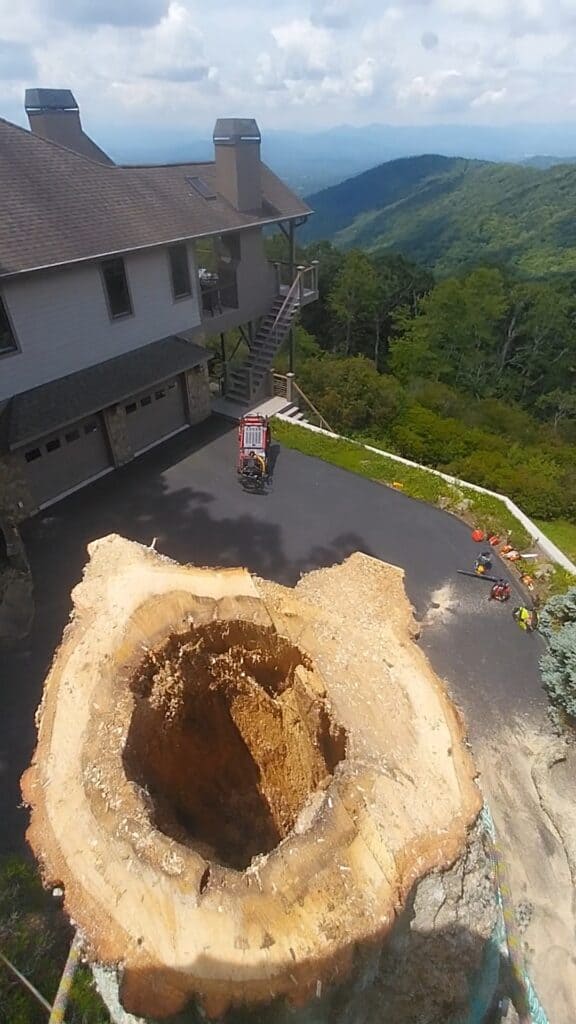
The Importance of Professional Tree Inspections
Hiring a professional arborist to inspect trees is the safest and most reliable way to identify hazards. While property owners can look for obvious signs of distress, an arborist has the training and tools to perform a thorough risk assessment. Professional tree inspections not only catch current hazards but also anticipate future risks.
Homeowners should make regular tree inspections part of their property maintenance routine. A professional’s insight ensures that no potential hazards are missed.
- Arborists have specialized equipment for inspecting trees
- Professional assessments often catch issues early
- Certified arborists provide reliable advice for tree care
When to Consult an Arborist for Tree Risk
Not all tree risks are obvious, and knowing when to call an arborist can make all the difference in maintaining a safe environment. If a tree shows signs of instability, it’s always better to consult an arborist sooner rather than later. Early intervention can prevent injuries and save property from damage.
An arborist can evaluate whether a tree can be saved with pruning or other interventions or whether it should be removed entirely. Knowing when to consult an expert can save time, money, and even lives.
- Call an arborist if the tree is leaning suddenly
- If there’s visible damage after a storm, consult a professional
- Unusual root exposure or cracking should be inspected immediately
How to Prevent Tree Hazards in Your Yard
Proactive measures can greatly reduce the risk of hazardous trees on a property. Regular maintenance, trimming, and monitoring are key to ensuring trees remain healthy and safe. Homeowners can take action to prevent potential hazards by working with an arborist on a maintenance plan.
Preventative care is always the best approach when dealing with trees. It’s easier to manage a tree before it becomes a threat than to handle the aftermath of a tree failure.
- Regularly prune dead or damaged branches
- Inspect trees after storms for signs of damage
- Maintain proper watering and fertilizing schedules to keep trees healthy
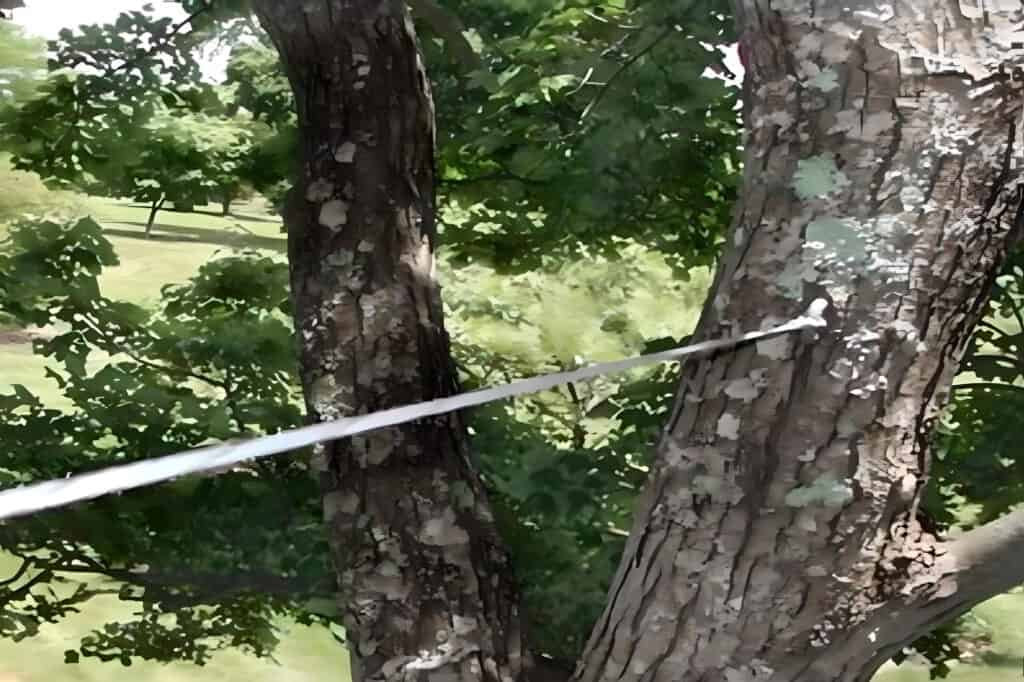
tree cabling service for trees
Key Takeaways for Identifying Hazardous Trees
- Trees can become hazardous due to structural defects, disease, or external damage
- Regular inspections and maintenance are essential for preventing tree hazards
- Professional arborists have the expertise to identify and mitigate tree risks
Frequently Asked Questions About Identifying Hazardous Trees
What are the most common signs of a hazardous tree?
Cracks in the trunk, dead branches, leaning, and fungal growth near the base are common indicators of a hazardous tree.
How often should trees be inspected for hazards?
It’s recommended to inspect trees annually or after major weather events to catch early signs of distress.
Can a hazardous tree be saved, or does it need to be removed?
Depending on the severity of the damage, some hazardous trees can be saved with pruning or bracing, but others may require removal.
What should I do if I suspect my tree is a hazard?
Consult a professional arborist immediately for a thorough inspection and guidance on the next steps.
How do weather conditions affect tree hazards?
High winds, heavy rain, and ice can weaken tree structures, increasing the likelihood of breakage or uprooting. Regular inspections after storms are crucial.
Precision Arborcare is your trusted arborist for expert tree services in Asheville, NC. Built on a passion for trees and a commitment to providing top-quality arborist care, our company excels in technical skills while prioritizing clear communication, customer satisfaction, and safety. Our team consists of certified arborists and tree care professionals dedicated to enhancing and preserving the natural beauty of your landscape. We pride ourselves on being approachable, friendly, and professional arborists, ensuring that our clients feel confident and informed throughout every step of their tree care journey. Precision Arborcare offers tailored arborist services to meet the specific needs of each client, from routine maintenance and emergency tree services to specialized care for your trees.
